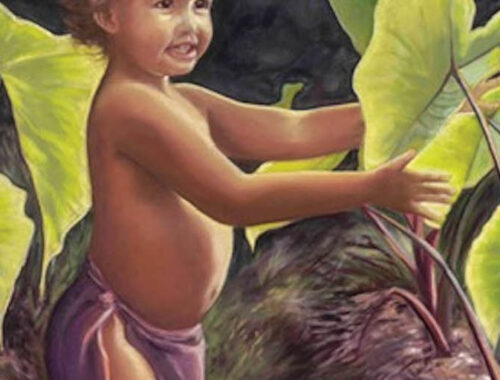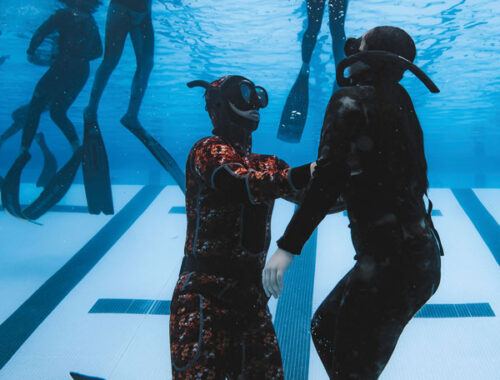
At Home in the Caldera: Koa‘e Kea, the White-Tailed Tropicbird

By Rachel Laderman
If you have trekked to Halema‘uma‘u in Hawai‘i Volcanoes National Park to see the lava fountaining in the caldera, you may have caught the sweeping movements of a white bird carving loops from the steaming caldera floor to high in the sky above, where gasses from the lava lake mix with clouds. This intrepid and elegant flier is the white-tailed tropicbird, koa‘e kea, Phaethon lepturus.
What a place to live and raise young—in the maw of an active volcano, with steaming vents, sheer cliffs, volcanic gasses, and the occasional massive earthquake and eruption! The tropicbird’s sleek grace is almost as if in contrast to this extreme landscape, with its three-foot wingspan and slender 16-inch tail, as long as its gull-sized body. The elegant tail feathers twitch like a rudder, ever-so-slightly guiding direction. These long tail feathers were highly valued by Hawaiian artisans, who used them to make kāhili, the feather standards that surrounded royalty.
In Halema‘uma‘u, the white-tailed tropicbirds not only don’t seem to mind the warm gasses, it appears they use them to get a lift up the sheer cliff walls to their nests. Koa‘e kea incubate their eggs along the volcanically-warmed cliff walls.
“They are masters of the wind, able to navigate in the canyons,” says Afsheen Siddiqi, wildlife biologist with Department of Land and Natural Resources on O‘ahu. Afsheen coordinates seabird and waterbird recovery throughout Hawai‘i. She says that, of the three species of tropicbird, two breed in the Hawaiian Islands. The red-tailed is found on Kaua‘i and O‘ahu. Both species are fairly abundant throughout the Pacific. “They often breed and nest in coastal cliff areas that are hard to access, and forage away from land; both habits make them less observable,” Afsheen points out, “So there is limited information on them in Hawai‘i.”
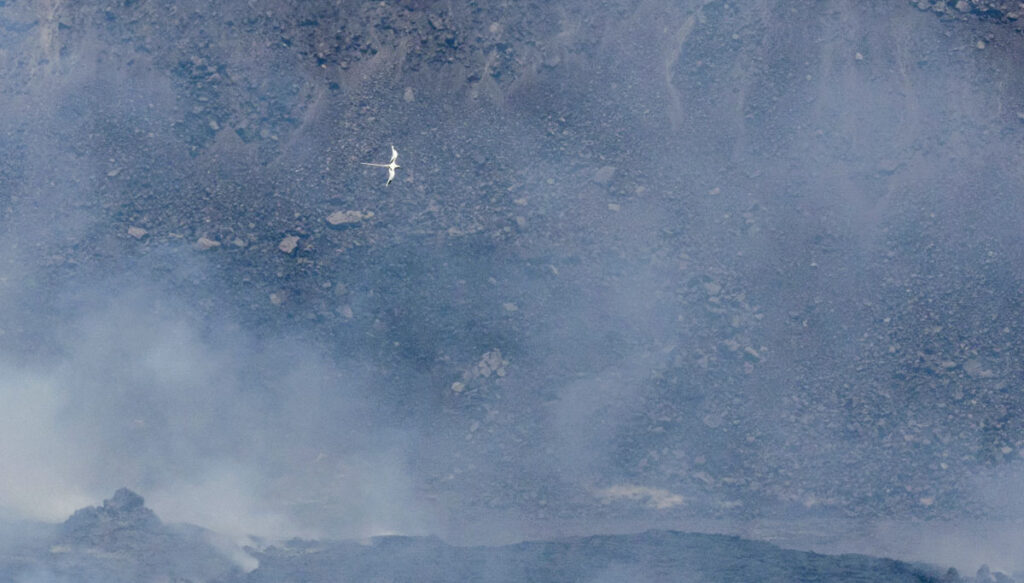
Undeterred By Earthquakes and Eruptions
Many tropicbird nesting sites were destroyed in the massive crater collapse of Kīlauea in 2018. Halema‘uma‘u crater grew to a depth of 1,600 feet. Park rangers including Ranger Dean Gallagher observed tropicbirds circling the giant ash clouds that accompanied the collapse events.
“We were heartbroken at the thought of all their nesting sites being destroyed, but what followed was even more amazing,” says Dean. “Using a spotting scope, I was able to observe the birds werenʻt frantically searching for their old nesting sites but rather choosing new sites in the now greatly enlarged crater. Given the ancient nature of these birds, I think both they, and their ancestors, have seen their fair share of earthquakes and volcanic eruptions.”
Dean calls tropicbirds “living fossils.” They belong to an order of birds called Phaethontidae that is one of the most ancient lineages on the planet. “There is a perfectly preserved fossil of a white-tailed tropicbird found in New England that is over 50 million years old,” says Dean, “predating humans by a long shot!”
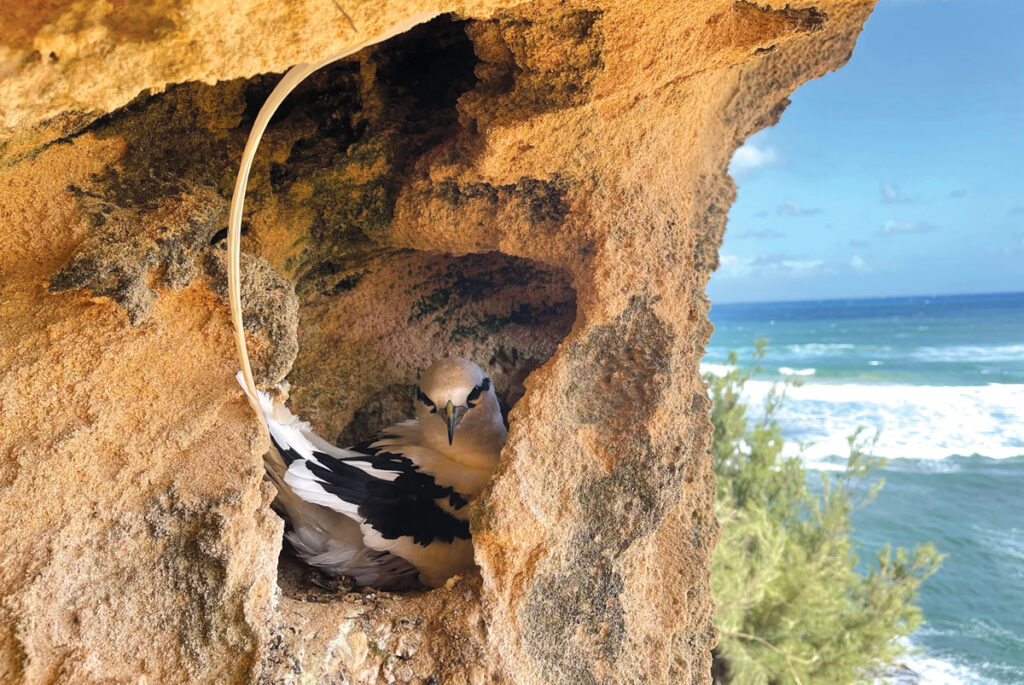
Tropicbird Lifestyle
Koa‘e kea pairs remain together for years. They can breed any time of year, engaging in complex, acrobatic aerial displays. They lay just one egg, usually between March and October, basically in a bare cranny on the sheerest of cliffs. Both males and females feed the chicks, whose loud screams echo against the canyon walls. When the adult regurgitates to feed its young, the adult fits its bill inside of the chick’s, opposite of how most birds feed. The chicks are on their own once out of the nest.
Adults forage alone when it’s not chick-rearing season, going long distances from land. They feed on fish and squid throughout the day, plunge-diving from 50–65 feet above the water.
Their cliff-dwelling habit largely protects tropicbirds from myna birds, rats, cats, and mongoose, the typical bird predators. In the low-elevation Northwest Hawaiian Islands, koa‘e kea may nest in ironwood tree cavities. Lying within the embrace of the National Park system adds another critical layer of protection to the breeding and nesting sites of these majestic birds.
White-tailed tropicbirds nest and may be seen on most of the other Hawaiian Islands and oceanic islands throughout the world, although their distribution is not well known. The mysteries of the tropicbird are serving it well: it has outlived many other species, and found a way to survive in an active volcano, with elegance. ❖
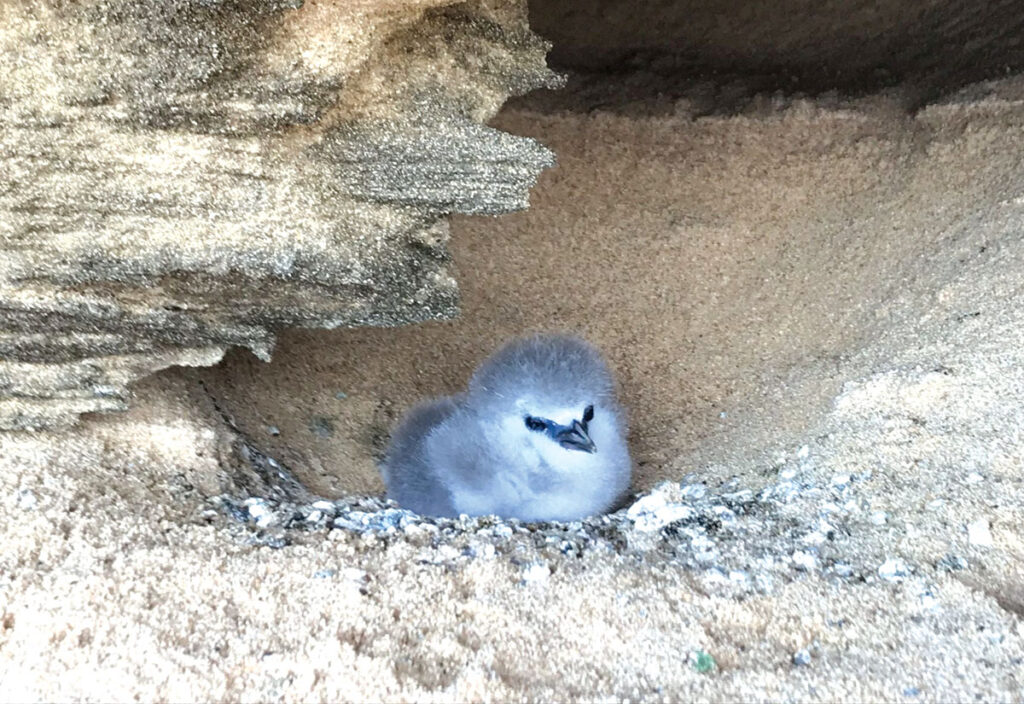
Rachel Laderman, Sustainable Pacific Program, Lynker LLC/NOAA Affiliate, Hawai‘i Island


